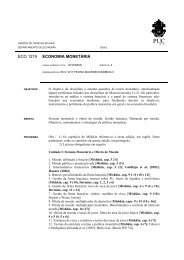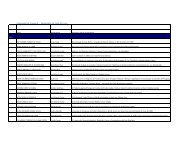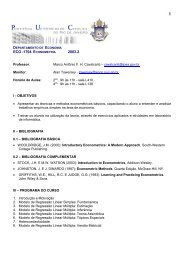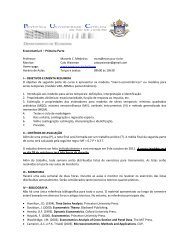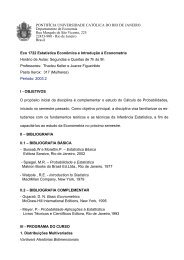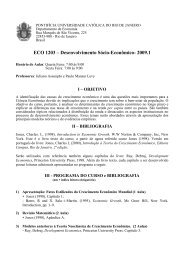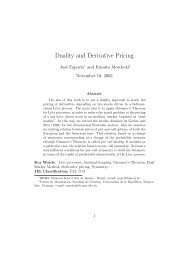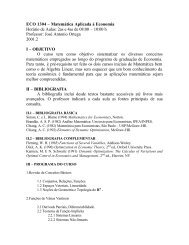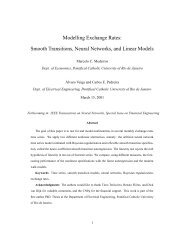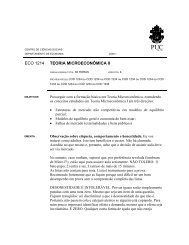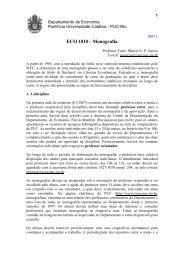Dynamic Hedging with Stochastic Differential Utility
Dynamic Hedging with Stochastic Differential Utility
Dynamic Hedging with Stochastic Differential Utility
Create successful ePaper yourself
Turn your PDF publications into a flip-book with our unique Google optimized e-Paper software.
Define y s ≡ ∂Xθ s. Then the expression is an ordinary differential equation,∂X0θwhose solution is given byy t = y 0 e rt ,y 0 =1.Hence∂X θ T −t∂X θ 0= e r(T −t) .By Itô’s lemma again on equation 8:Z T −tWT θt−t = W0 θt += W θt0 +0Z T −t0a t+s ds +π 0 µ t+s ds +Z T −t0Z T −t0b 0 t+sdB s == W0 θt + π 0 (S T −t − S 0 )+XT θt−t − X0 θt .¡σ0t+s π ¢0 dB s + X θtT −t − X θt0 =Consequently the result follows.Proposition 3 says that a positive variation in the initial wealth impliesa positive variation in the final wealth, and hence, in the value function, aswe will see soon. Similar argument can be stated <strong>with</strong> respect to the initialposition in the margin account. In the proof, notice that an increase in theinitial margin account amounts to a gross return growth in the final marginduring the period considered.This result does not rely on the utility assumptions, but only on thebudget constraint. Consequently this result holds whether we are at theoptimal point or not.16



